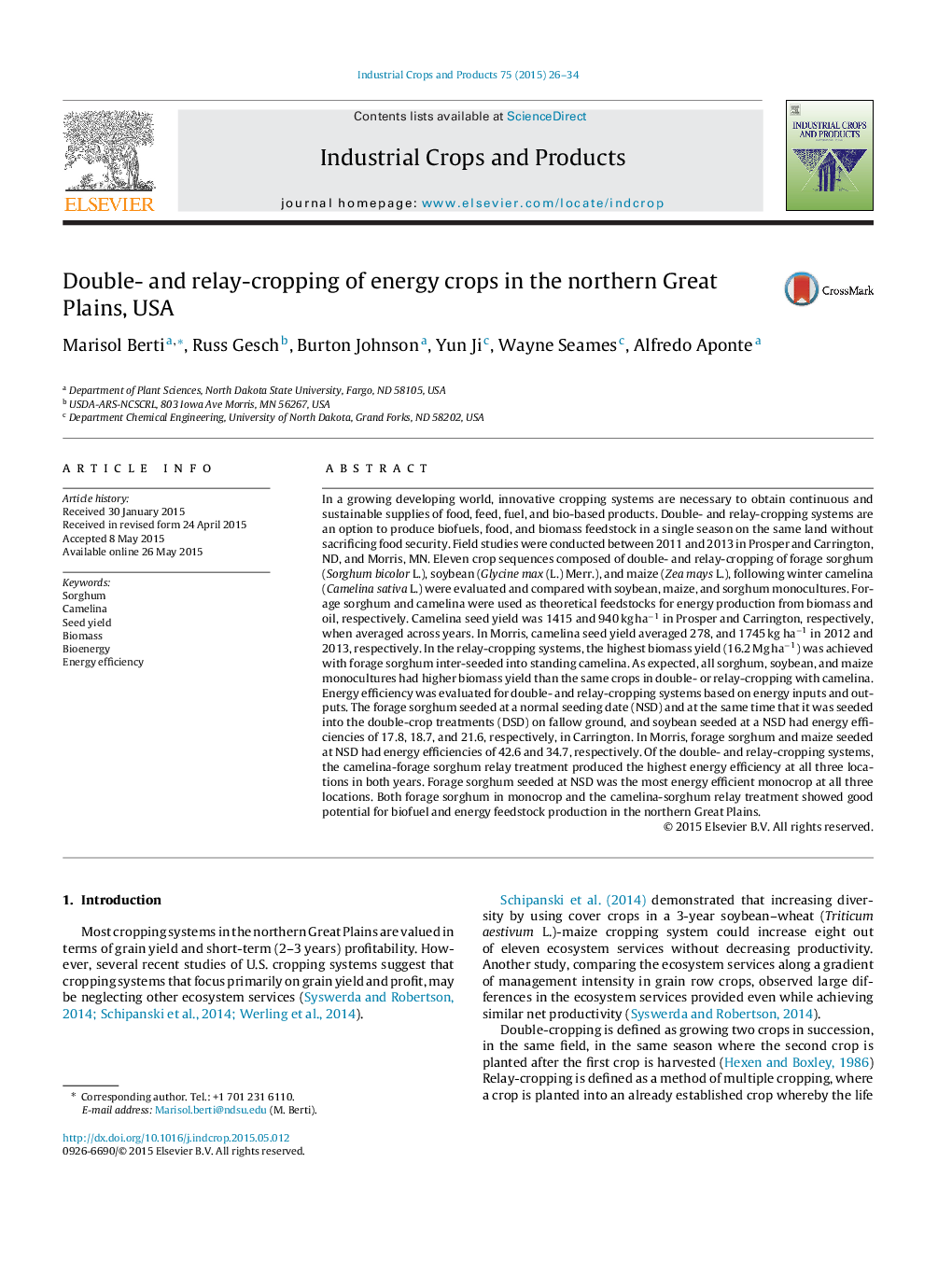| کد مقاله | کد نشریه | سال انتشار | مقاله انگلیسی | نسخه تمام متن |
|---|---|---|---|---|
| 4512822 | 1322172 | 2015 | 9 صفحه PDF | دانلود رایگان |
• Relay-cropping allows the production of two crops in the same field in a single season.
• Relaying forage sorghum into winter camelina had the best energy efficiency of dual crop systems.
• Relay-cropping forage sorghum with winter camelina is a viable cropping system.
In a growing developing world, innovative cropping systems are necessary to obtain continuous and sustainable supplies of food, feed, fuel, and bio-based products. Double- and relay-cropping systems are an option to produce biofuels, food, and biomass feedstock in a single season on the same land without sacrificing food security. Field studies were conducted between 2011 and 2013 in Prosper and Carrington, ND, and Morris, MN. Eleven crop sequences composed of double- and relay-cropping of forage sorghum (Sorghum bicolor L.), soybean (Glycine max (L.) Merr.), and maize (Zea mays L.), following winter camelina (Camelina sativa L.) were evaluated and compared with soybean, maize, and sorghum monocultures. Forage sorghum and camelina were used as theoretical feedstocks for energy production from biomass and oil, respectively. Camelina seed yield was 1415 and 940 kg ha−1 in Prosper and Carrington, respectively, when averaged across years. In Morris, camelina seed yield averaged 278, and 1745 kg ha−1 in 2012 and 2013, respectively. In the relay-cropping systems, the highest biomass yield (16.2 Mg ha−1) was achieved with forage sorghum inter-seeded into standing camelina. As expected, all sorghum, soybean, and maize monocultures had higher biomass yield than the same crops in double- or relay-cropping with camelina. Energy efficiency was evaluated for double- and relay-cropping systems based on energy inputs and outputs. The forage sorghum seeded at a normal seeding date (NSD) and at the same time that it was seeded into the double-crop treatments (DSD) on fallow ground, and soybean seeded at a NSD had energy efficiencies of 17.8, 18.7, and 21.6, respectively, in Carrington. In Morris, forage sorghum and maize seeded at NSD had energy efficiencies of 42.6 and 34.7, respectively. Of the double- and relay-cropping systems, the camelina-forage sorghum relay treatment produced the highest energy efficiency at all three locations in both years. Forage sorghum seeded at NSD was the most energy efficient monocrop at all three locations. Both forage sorghum in monocrop and the camelina-sorghum relay treatment showed good potential for biofuel and energy feedstock production in the northern Great Plains.
Journal: Industrial Crops and Products - Volume 75, Part B, 30 November 2015, Pages 26–34
